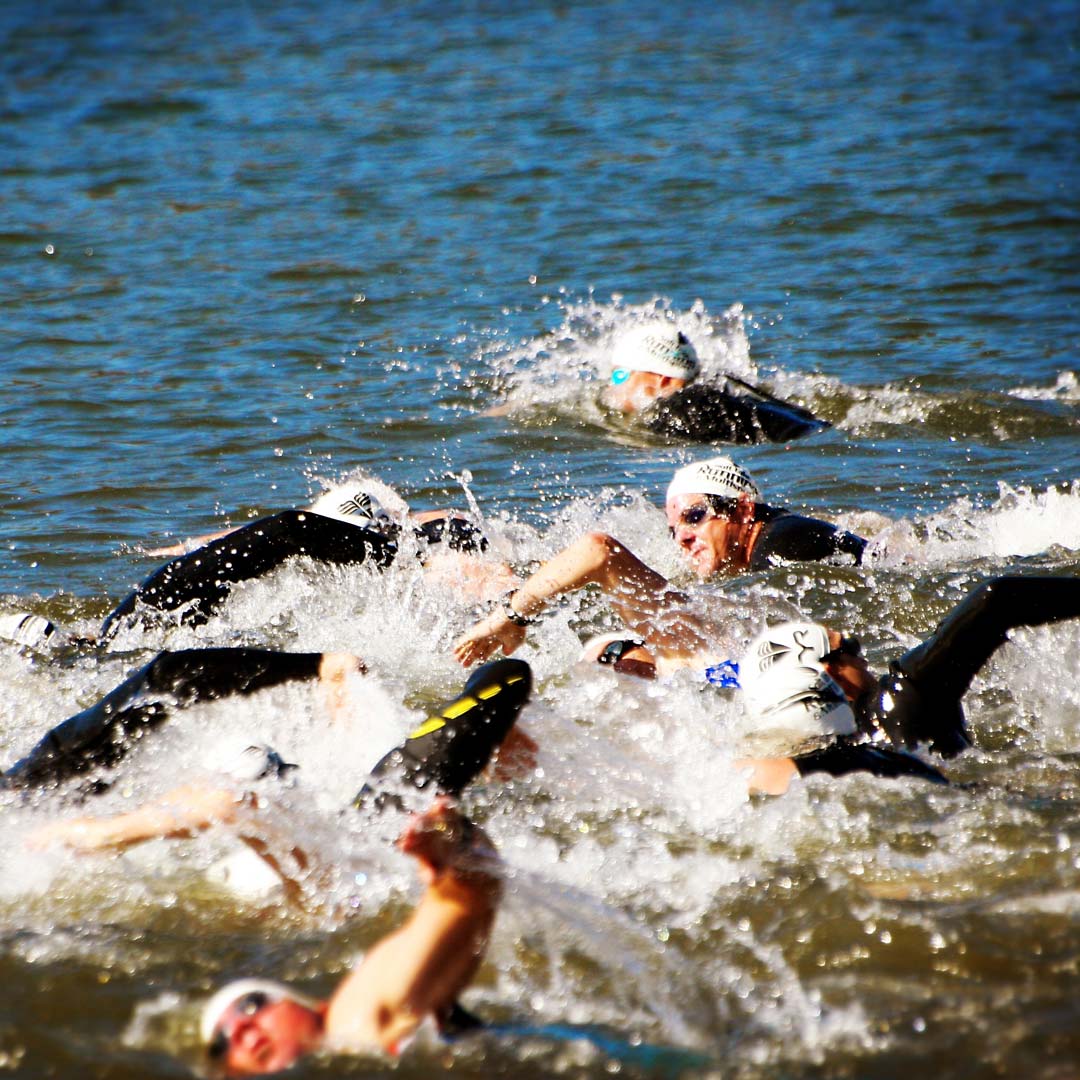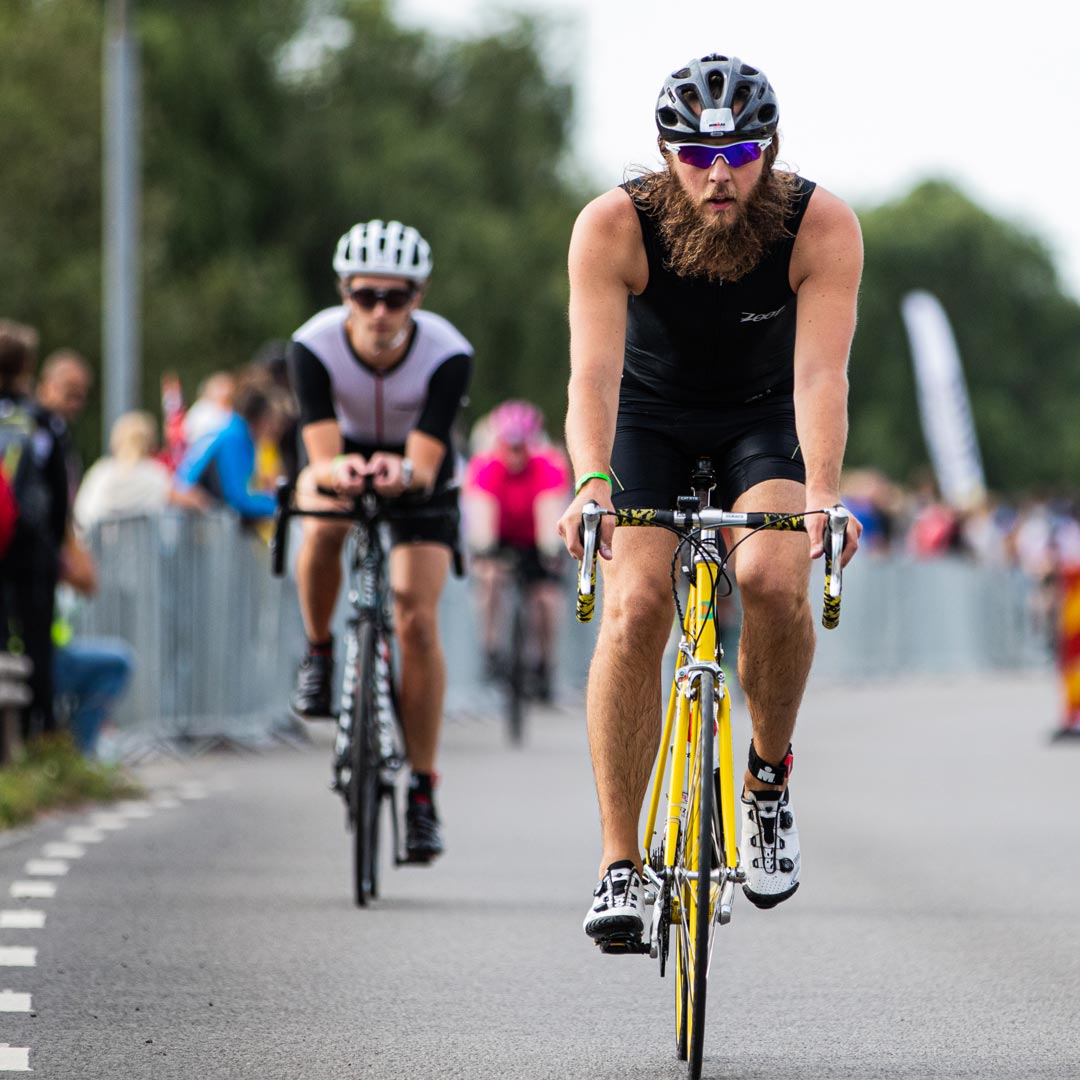Your cart is currently empty!

Exploring the different triathlon distances: What you need to know
Key learnings
From sprints to Ironman events, triathlon has something for everyone – but what are these different distances? What’s the difference between a sprint distance triathlon and an Olympic distance race? How does training differ for each event?
Let’s take a look at the different triathlon distances so you can decide which is right for you!
Sprint Distance
Sprint distance triathlons are a great way to get into the sport of triathlon. The shorter distance makes it ideal for beginners and those who only have a little time to train. Sprint distance races typically consist of a 750m swim, 20km bike ride, and 5km run.
The swim leg is usually done in open water, such as a lake or ocean, depending on the race location. Therefore, practicing swimming in open water before attempting your first sprint distance race is vital, so you are comfortable with the environment and conditions.
Swimming 750m can seem daunting at first. Still, it’s doable if you break it down into manageable chunks during your training – focus on completing one lap at a time rather than thinking about how far you still have left to go.

The bike leg is usually done on flat terrain, which makes it easier for beginners who may still need to get used to riding hills. However, even though this section may appear easy, there are still some things you need to consider when preparing for your race – make sure your bike is well maintained and check that all components are working properly before setting off.
Additionally, ensure you know where the course goes by familiarizing yourself with any turns or changes in elevation beforehand, so there aren’t any surprises during the race itself.
Finally comes the run leg, which will require good pacing skills and mental toughness since this section tends to be more difficult after having already completed two other disciplines.
During race day, try not to push too hard too early. Otherwise, fatigue could set in quickly, resulting in slower times overall. Aiming for consistent splits throughout will help keep your energy levels high until you reach the finish line.
Sprint distance triathlons are great for beginner athletes looking to test their endurance and speed. In contrast, Olympic distance triathlons offer a more challenging experience.
So let us explore the details of an Olympic distance triathlon next.
Olympic distance
The Olympic distance triathlon (even called Standard distance) is the most popular of triathlon distances and a race format for those looking to take on a challenge.
The race distance consists of a 1.5km swim, 40km bike ride, and 10km run. This distance requires more training and commitment than a Sprint. But still offers an achievable goal for many athletes.
For those who are new to triathlons, it is important to understand that Olympic-distance races require significant preparation and dedication in order to complete them successfully.
Training should include both aerobic endurance and speed work to build up your strength and stamina for the longer distances involved in this type of event.
In addition to physical training, focusing on your nutrition before, during, and after each workout session or race day is crucial. Eating properly ensures that you have enough energy throughout the race without feeling overly fatigued by the end of it.
Lastly, don’t forget about recovery – taking rest days when necessary will allow your body time to recover from tough workouts so that you can perform optimally come race day.
During the season, it is vital to practice proper pacing during these events and mental toughness. A positive attitude towards challenges faced along the way will help keep motivation levels high even when things get challenging. Any athlete can conquer an Olympic triathlon distance with proper planning and preparation.
The Olympic distance is a great way to start your triathlon journey. The Half-Ironman distance offers the next level up for those looking for more of a challenge.
Half Ironman distance
The Half Ironman distance is considered a long-distance triathlon race, consisting of a 1.9km swim, 90km bike ride, and 21km run.
It requires significant training and commitment to complete successfully. And it is only recommended for experienced athletes or those with plenty of time to train.
When preparing for a half-ironman distance triathlon, it’s absolutely vital to have an effective triathlon training plan that includes all three disciplines to build up your endurance levels and get used to the demands of each event.
When planning your training season, include rest days into your training schedule so your body can recover from strenuous efforts while allowing you enough time to fit in quality sessions throughout the week.
Nutrition plays an even more important role compared to shorter triathlon distances. Therefore, make sure you eat well-balanced meals with plenty of protein, carbohydrates, and healthy fats before, during, and after exercise to have enough energy for every session.

The key thing when racing Half Ironman distance is pacing yourself correctly. Do not go out too fast on any one discipline, as this will leave you feeling exhausted by the end. Or worse, quitting due to fatigue. So, take regular breaks during each stage if needed but try to maintain momentum. Instead, stay focused on maintaining a consistent effort throughout each leg of the race.
Finally, remember that although it’s a tough challenge, having fun should be your top priority. And the Half Ironman distance is a great way to test yourself and challenge your limits before attempting the full Ironman.
Now let’s take a look at what it takes to tackle the Ironman distance.
Ironman distance
The Ironman event is the ultimate challenge among triathlon distances. It consists of a 3.8km swim, a 180km bike ride, and a 42 km run.
This event requires extensive training over several months or even years to complete successfully and should only be attempted by experienced athletes with plenty of time to dedicate to their training program.
The key to success in an Ironman race is consistency in your training plan. You need to have a good base level of fitness before increasing the intensity and duration of your workouts. Start off slowly with shorter triathlon distances and gradually increase the length as you become more comfortable with swimming, cycling, and running. Ultimately handling all three disciplines at once.

Again, give yourself enough rest days between the more challenging workouts so that your body has time to recover from the strain it will experience during these long-distance activities. Make sure you include strength training in your training routine. Yoga or Pilates will also help improve flexibility and core strength while giving your muscles a break from intense exercise sessions on other days.
Like the half-ironman distance, nutrition is a necessary factor to consider. Plan for enough energy intake throughout the race day. But also making healthy choices like lean proteins, complex carbohydrates, fruits, and vegetables will provide power without weighing down on digestion during the training season. Especially during the hard workout sessions. Hydration is equally essential; drink plenty of water, including electrolytes, throughout the event – they are crucial for keeping up performance levels during more extended activities.
Finally, having a positive mental attitude towards completing this challenge is just as important as physical preparation. Stay motivated by setting realistic goals along the journey so that every step feels achievable rather than overwhelming.
With dedication and determination, anyone can conquer an Ironman distance event – just give yourself and your training the appropriate time.
Your next triathlon
In conclusion, as an athlete, you have a variety of triathlon distances to choose from, ranging from sprints to Ironman events.
Are you ready to take on the triathlon challenge but need help preparing? Consider our beginner triathlon training plan to take your training and racing to the next level. Our comprehensive plan is tailored to help you succeed as a beginner triathlete, regardless of your current fitness level or experience.
Our plan includes:
With our beginner triathlon training plan, you’ll be able to train smarter and achieve your goals without the risk of getting injured. So, no more guessing, no more confusion.

Leave a Reply